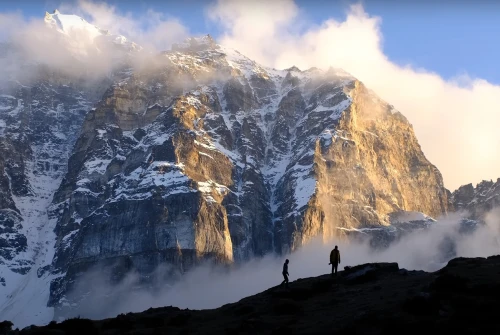Trek Overview FAQs For Langtang Valley Trek
Where is Langtang Valley Located?
Langtang Valley is located in northern Nepal, close to the Tibet border, within the stunning Langtang National Park. Known for its breathtaking mountain views and rich Tibetan culture, it is a popular destination for trekkers seeking a relatively less-crowded trekking experience. The valley is easily accessible from Kathmandu, making it a great choice for those looking to explore Nepal’s natural beauty and cultural heritage.
How Long is the Langtang Valley Trek?
The standard Langtang Valley Trek typically takes 7–10 days, including 5–7 days of actual trekking. The trek duration can be adjusted depending on your fitness level, trekking pace, and the number of acclimatization days you add. Itineraries can be customized for those looking for a shorter or longer experience.
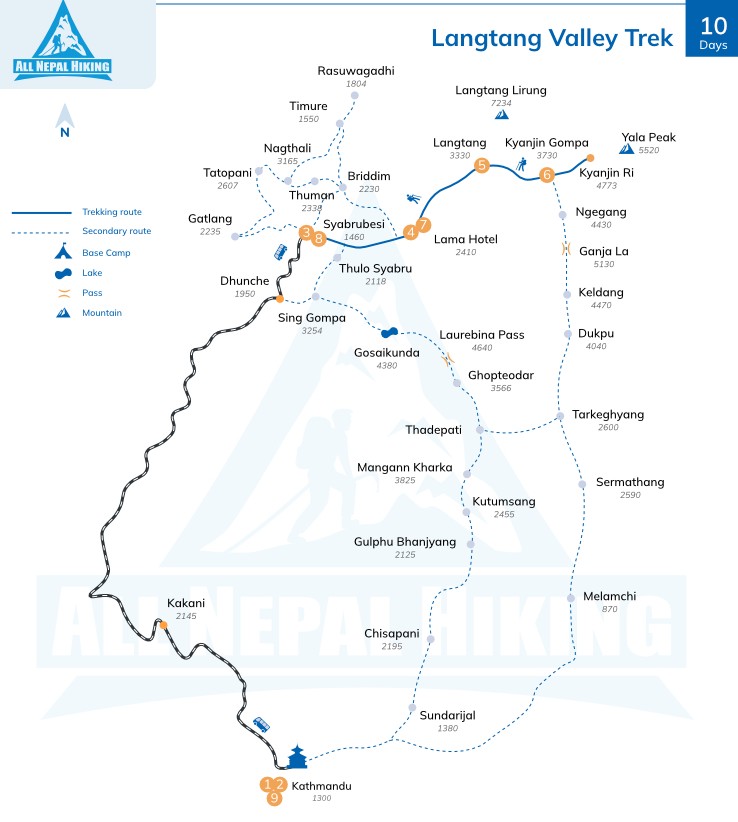
How Difficult is the Langtang Trek?
The Langtang Valley Trek difficulty is considered moderate, making it suitable for trekkers with a basic fitness level. Expect 5–7 hours of trekking each day on varied terrain. The trek doesn’t require any technical climbing skills, though it does involve steep ascents, altitude gain, and high mountain trails, so pre-trip fitness and preparation are essential.
What is the Highest Point of the Langtang Trek?
The highest point reached during the trek is Kyanjin Gompa, at an altitude of 3,870 meters (12,700 feet). This is the main destination, where trekkers explore the ancient monastery and enjoy panoramic views of surrounding peaks.
For those looking to push further, Tserko Ri offers an optional day hike to 4,984 meters (16,355 feet), providing stunning sunrise views over the Himalayas.
Can I Extend My Trek After Completing the Langtang Valley Trek?
Yes, you can easily extend your trek after completing the Langtang Valley Trek by visiting nearby destinations, such as:
- Gosaikunda Lake: A sacred alpine lake located at an altitude of 4,380 meters, known for its stunning beauty and spiritual significance. It's a popular addition for trekkers looking to experience both natural beauty and cultural significance.
- Helambu Trek: Located to the south of Langtang, the Helambu region offers beautiful forests, Tibetan Buddhist monasteries, and scenic landscapes, making it a perfect extension for those looking for a less crowded trek.
- Tamang Heritage Trail: A cultural trek through traditional Tamang villages, offering a deep dive into local customs, heritage, and stunning mountain views. It’s ideal for those wanting to experience both the culture and nature of the Langtang region.
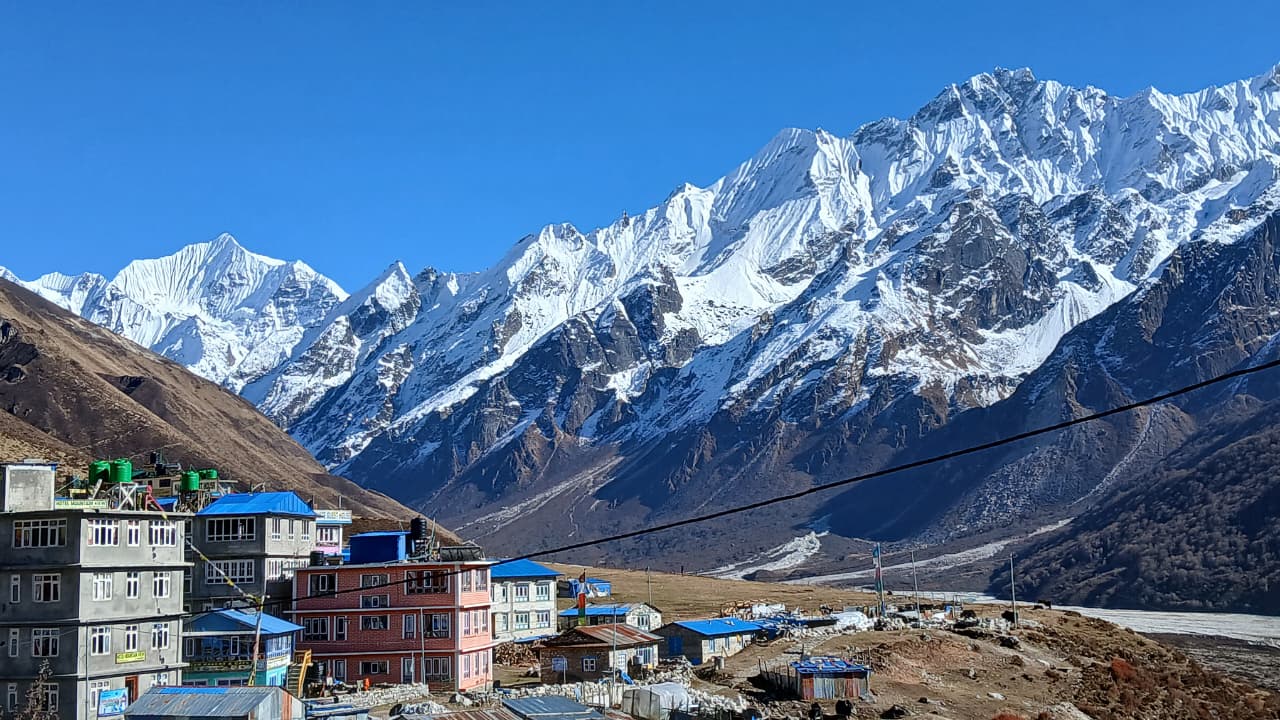
What Are the Best Viewpoints on the Langtang Valley Trek?
The Langtang Valley Trek offers some of the most breathtaking views in Nepal. Here are the best viewpoints along the route:
- Kyanjin Ri (4,773 m): This summit offers a 360-degree panoramic view of the Langtang Range, including peaks like Langtang Lirung and Gangchenpo. It’s one of the most popular spots for trekkers looking for a stunning, high-altitude perspective.
- Tserko Ri (5,033 m): Tserko Ri is another amazing viewpoint, offering views of Langtang Lirung, Yala Peak, and the surrounding snow-capped Himalayan peaks. It's a great choice for trekkers looking for a more challenging day hike with incredible rewards.
- Langtang Village: While trekking through Langtang Village, trekkers can enjoy mesmerizing views of the Langtang Lirung peak and the valley’s rugged terrain. This village is surrounded by high mountains, adding to its appeal as a scenic pitstop.
What Is Langtang National Park?
Langtang National Park is a protected area in Nepal, established in 1976. Spanning 1,710 square kilometers, it is one of Nepal's most diverse and pristine national parks. The park is home to a wide range of wildlife, including the red panda, snow leopard, and Himalayan tahr, as well as hundreds of bird species. Langtang National Park also boasts stunning natural landscapes, such as:
- Alpine meadows and glacial rivers.
- Forests of rhododendron and bamboo.
- Snow-capped peaks like Langtang Lirung and Gangchenpo.
Trekking through the Langtang region not only offers spectacular mountain views but also an opportunity to experience the rich biodiversity of this remarkable national park.
What Are the Highlights of the Langtang Valley Trek?
The Langtang Trek is full of highlights, including:
- Spectacular mountain views of peaks like Langtang Lirung, Ganchenpo, Dorje Lakpa, and Yala Peak
- Immersion in Tamang and Tibetan cultures in traditional villages
- A visit to Kyanjin Gompa, a spiritual hub with monasteries and the famous yak cheese factory
- Exploration of Langtang National Park, which is home to diverse wildlife such as the red panda and other unique flora and fauna
- Pristine landscapes, including glaciers, rivers, alpine forests, and high-altitude meadows
- Peaceful, less-crowded trails, offering a more tranquil trekking experience compared to other famous regions like Everest or Annapurna
Is 8 Days Enough for the Langtang Trek?
Yes, 8 days is a popular itinerary for the Langtang Valley trek, allowing enough time for acclimatization, exploration, and rest. The 8-day trek provides trekkers with a balanced schedule, which includes the Kyanjin Gompa visit and an optional hike to Tserko Ri. However, the duration can be customized to suit your pace and preference.
What Makes Langtang Valley Trek Unique?
The Langtang Valley Trek stands out due to its stunning scenic beauty and the opportunity to immerse in Tibetan culture while trekking through less-crowded trails. Unlike the more popular Everest or Annapurna regions, Langtang offers a more tranquil trekking experience. Its combination of pristine landscapes, ancient monasteries, and wildlife makes it a standout destination for nature lovers and culture enthusiasts alike.
Can I Do the Langtang Valley Trek in a Shorter Time?
While it is possible to complete the Langtang Valley Trek in 5 days, it’s important to note that this will be a faster-paced trek with fewer acclimatization days. Trekking too quickly at high altitudes can increase the risk of altitude sickness. It is always best to take your time, enjoy the journey, and prioritize safety and health over speed.

Trek Difficulty and Fitness For Langtang Nature Trek
Is Langtang Valley Trek difficult?
The Langtang Valley Trek difficulty is considered moderate. While there are no technical climbing requirements, the trek involves gradual ascents, some steep climbs, and longer trekking days (5–7 hours per day). The altitude can also make the trek challenging for some, especially above 3,000 meters. However, the trek is suitable for fit trekkers who are in good physical condition and have some trekking experience.
What kind of fitness do I need for the Langtang Valley Trek?
For the Langtang Trek, you should be in good physical condition, particularly with cardiovascular fitness. The trek involves long hiking days (5–7 hours per day) on uneven terrain. It’s ideal to prepare by hiking on inclines or doing cardio exercises like running, swimming, or cycling in the months leading up to your trip. If you're not accustomed to hiking, consider doing practice hikes with a backpack to build endurance.
Do I need previous trekking experience for Langtang Valley Trek?
While previous trekking experience isn’t mandatory, it certainly helps. If you have hiked in the mountains before, you’ll be familiar with the physical demands of high-altitude trekking. However, new trekkers can still complete the Langtang Valley Trek if they are physically prepared. Gradually building up your endurance and training on steep terrain will ensure you're ready for the trek, even if it's your first adventure in the mountains.
How challenging is the altitude on Langtang Valley Trek?
The altitude on the Langtang Valley Trek can be challenging, especially after 3,000 meters. The highest point trekkers typically reach is Kyanjin Gompa (3,870 m / 12,700 ft), with the optional hike to Tserko Ri (4,984 m / 16,355 ft). As you gain altitude, your body needs to adjust. Altitude sickness is a concern, so it’s essential to trek gradually, stay hydrated, and take acclimatization days to avoid complications.

Can I complete the Langtang Valley Trek without being in top physical shape?
While the Langtang Valley Trek is considered moderate, it’s still important to be in good physical shape. If you're not in top condition, you may find the longer days of trekking and steep ascents more challenging. Trekking preparation is key to success. You can still enjoy the trek if you're physically active and gradually build strength and endurance. If you’re unsure of your fitness level, consult a doctor before your trek and consider hiring a guide to pace your trek properly.
How do I train for the Langtang Valley Trek?
Training for the Langtang Valley Trek involves focusing on both endurance and strength. Here are some tips to prepare:
- Cardiovascular training: Running, cycling, or swimming will improve stamina.
- Hiking on inclines: Find hills or stairs to simulate the terrain you’ll encounter.
- Strength training: Focus on leg muscles (quadriceps, hamstrings, calves) and your core to help with uphill climbs and long days on your feet.
- Practice with a loaded backpack: This helps simulate the weight you’ll carry and builds shoulder and back strength.
- Altitude acclimatization: If possible, hike in higher altitudes to get used to lower oxygen levels.
Is Langtang Valley Trek suitable for beginners?
Yes, the Langtang Valley Trek is suitable for beginners who have a basic level of fitness and are willing to put in the necessary preparation. While it’s not an easy trek, it is still considered less challenging compared to Everest or Annapurna treks. With proper acclimatization and training, beginners can enjoy the trek and the magnificent views.
How many hours a day do I hike on the Langtang Valley Trek?
On average, trekkers will hike for 5–7 hours per day on the Langtang Valley Trek. The trek covers varying terrain, from forests to high-altitude meadows. The longest days may involve longer hiking hours, but you will be able to take plenty of breaks. Rest days are also built into the itinerary to help with acclimatization and allow trekkers to explore sites like Kyanjin Gompa or hike to Tserko Ri.
What are some common fitness mistakes to avoid when preparing for Langtang Valley Trek?
Here are a few mistakes to avoid:
- Skipping cardio: It’s important to prepare your body for long days of continuous activity. Focus on building stamina through regular cardiovascular workouts.
- Not training on uneven terrain: Hiking on uneven ground is very different from flat ground. Make sure to practice on hilly trails to simulate the conditions of the trek.
- Lack of hydration: Staying hydrated is key at high altitudes, even during training. Practice drinking plenty of water during long hikes.
- Neglecting rest days: Your body needs to rest and recover. Don’t over-train. Make sure to have rest days to avoid fatigue.
Planning & Logistics for the Langtang Valley Trek
Do I Need a Guide for the Langtang Valley Trek?
While a guide is not mandatory for the Langtang Valley Trek, hiring one is highly recommended for both safety and enriching your experience. In recent years, solo trekking has been restricted in many parts of Nepal, including Langtang, due to safety concerns and the remote nature of the area. While the regulations allow for independent trekking in Langtang, a licensed guide can be a valuable asset, especially for those who are unfamiliar with high-altitude treks or navigating rugged trails.
A guide will help you with navigation, making sure you stay on the right path and are aware of any potential dangers, such as landslides or rough terrain. Additionally, trekking with a guide offers opportunities to learn about the local Tamang culture, Tibetan heritage, and wildlife in Langtang National Park.
If you prefer a self-guided trek, make sure you're well-prepared with good maps, a compass, and reliable GPS. You can also opt for a porter-guide (a guide who also carries your bags), which provides the benefits of a guide without being as expensive as a full-service trekking package.

What Permits Are Required for the Langtang Valley Trek?
Trek in Langtang Valley, trekkers are required to obtain two permits:
Langtang National Park Entry Permit
- Cost: Approximately NPR 3,000 for foreigners.
- This permit grants you access to the Langtang National Park, home to stunning views of mountain peaks, glaciers, and diverse wildlife, including the rare red panda.
- Where to Get It: You can obtain the Langtang National Park Permit either in Kathmandu at the Nepal Tourism Board or directly in Dhunche, the last town before heading into the trek. If you're traveling by private jeep or shared jeep, you'll typically stop in Dhunche to obtain the permit before continuing onward to the trailhead.
TIMS (Trekkers' Information Management System) Card
- Cost: Around NPR 2,000 for independent trekkers or NPR 1,000 when arranged through a trekking agency.
- The TIMS Card is required for all trekkers in Nepal. It helps the authorities track trekkers for safety and emergency purposes. This card ensures that you are registered in the trekking system, improving safety in case of an emergency.
Both permits are essential for legal trekking in the Langtang Valley. While you can obtain the Langtang National Park Permit in Kathmandu, getting your TIMS Card and Langtang National Park Entry Permit in Dhunche can save you time once you're closer to the trailhead.
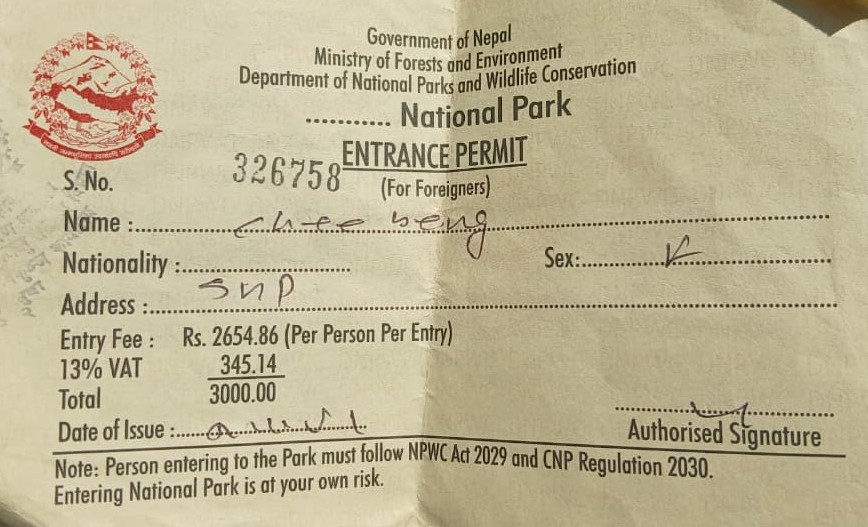
When is the Best Time to Do the Langtang Trek?
The best time to trek in Langtang Valley depends largely on weather conditions and your preferences:
- Spring (March–May): The Langtang trek in spring is fantastic for wildflowers in bloom, mild temperatures, and clearer mountain views. Spring in Langtang is one of the most beautiful trekking seasons, offering lush landscapes and vibrant colors.
- Autumn (September–November): This is considered the peak season for trekking in Langtang. The weather is clear, the skies are crystal blue, and the visibility of the Himalayas is unbeatable. It’s the most popular season for trekkers who want to experience perfect trekking weather and stunning mountain views.
- Winter (December–February) : Winter brings cold temperatures and snow, making the trek more challenging, especially in the higher altitudes. However, if you don’t mind the chill and are prepared for snowy trails, this can be an off-season trekking adventure with fewer crowds.
- Monsoon (June–August): The monsoon season in Nepal is from June to August. Heavy rainfall can cause landslides and make trails slippery. However, it is less crowded and can be a unique experience if you enjoy a quieter trek with lush, green landscapes. Leeches are also a concern during monsoon.
In general, autumn and spring are considered the best times for the Langtang Valley Trek due to stable weather and excellent visibility.
How Do I Reach the Starting Point of the Langtang Valley Trek?
The trek begins at Syabrubesi, a village located around 7–9 hours drive from Kathmandu. Here are the main transportation options to get there:
- Public Bus: The cheapest option, but also the most time-consuming and less comfortable. Buses depart early in the morning from Kathmandu and take a scenic route to Syabrubesi.
- Shared Jeep: A shared jeep is a more comfortable and faster option. You can share a ride with other trekkers, making it more affordable than a private jeep, though still a bit bumpy on some roads.
- Private Jeep: The fastest and most comfortable option. If you prefer a more relaxed journey, hiring a private jeep will take you directly to Syabrubesi, and you can have more flexibility in departure times.
You can book transportation through your trekking agency, or arrange it independently in Kathmandu. Make sure to plan for road conditions, as some sections can be rough, especially during the monsoon season.
How Much Cash Should I Carry for the Langtang Valley Trek?
While there are no ATMs on the trek beyond Dhunche (the last town with a bank), it is essential to bring enough Nepali Rupees for the entire trek. Here’s a breakdown of how much cash to carry:
- Daily Budget: You should bring around NPR 3,000 to 5,000 per day, depending on your spending habits. This covers the cost of meals, accommodation, and optional extras like charging electronics or using Wi-Fi.
- Extra for Emergencies: It’s always a good idea to carry some extra cash for unexpected expenses like emergency transport or additional supplies.
In general, carry small denominations for ease of payment and ensure that you’re well-prepared before heading to more remote areas where cash is the primary mode of transaction.
Health & Safety for the Langtang Valley Trek
Is Altitude Sickness a Risk on the Langtang Trek?
Yes, altitude sickness (AMS) is a potential risk for trekkers in the Langtang Valley, especially above 3,000 meters. The trek takes you to altitudes where the air pressure is lower, and your body may need time to adjust. Symptoms of AMS can include headaches, dizziness, nausea, and shortness of breath.To reduce the risk of altitude sickness:
- Ascend gradually: Avoid rapid ascents. Follow a steady pace and take regular rest breaks.
- Stay hydrated: Drink at least 3–4 liters of water a day to keep your body hydrated and aid acclimatization.
- Avoid alcohol: Alcohol dehydrates the body and makes it harder for your body to adjust to higher altitudes.
- Acclimatization stops: It’s essential to incorporate acclimatization days into your itinerary. For example, spend 2 nights at Kyanjin Gompa (3,870 meters) to allow your body to adjust before ascending further.
If you start to feel unwell at higher altitudes, it’s essential to descend immediately and seek medical attention.
Do I Need Travel Insurance for the Langtang Trek?
Yes, travel insurance is essential when trekking in the Langtang Valley. Ensure your policy covers:
- High-altitude trekking: Make sure the policy covers trekking up to 5,000 meters, as the trek reaches altitudes above 4,000 meters (e.g., Tserko Ri at 4,984 meters).
- Helicopter evacuation: In case of emergency, such as severe illness or injury, you may need to be evacuated by helicopter, which can be very expensive (costing thousands of dollars). Insurance that covers emergency evacuation is critical.
- Medical expenses: Coverage should include medical treatment for injuries or illness during the trek.
Is the Langtang Valley Trek Safe?
The Langtang Valley Trek is generally safe for trekkers, especially when you follow the recommended safety guidelines. Trekking with a guide ensures better safety as guides are familiar with the trail, local conditions, and emergency procedures. The trails are well-marked, and major villages along the route offer basic amenities and shelter.However, some factors could pose safety risks:
- Landslides: In the monsoon season (June–August), landslides can occur due to heavy rainfall, which may affect some of the trail sections. Make sure to avoid trekking during this time or stay informed about weather conditions.
- Weather: The weather in the Himalayas can change quickly, so always be prepared for temperature drops and potential storms, especially at higher altitudes.

What About Drinking Water and Hygiene on the Langtang Trek?
Drinking untreated tap or stream water in the Langtang Valley is not safe. To avoid illness, it’s important to use clean drinking water and take steps to ensure hygiene:
- Bottled water: Available in most teahouses, but purchasing bottled water can be expensive and contribute to plastic waste.
- Water purification tablets: Carrying water purification tablets (such as iodine or chlorine-based) is a cost-effective way to purify water from streams or taps.
- SteriPen: A SteriPen is a portable UV light device that effectively kills bacteria and viruses in water.
- Water filters: Consider using an eco-friendly water filter (like a LifeStraw or MSR filter) to purify water from streams or natural sources.
Make sure to always filter or treat water before drinking to prevent gastrointestinal illnesses. Also, be mindful of personal hygiene: washing your hands before meals and carrying wet wipes or hand sanitizers can help prevent sickness.
Are There Medical Facilities on the Langtang Trek?
There are basic medical facilities in the larger villages along the Langtang Valley Trek. These villages often have small health posts or first-aid stations, where you can get basic treatment for injuries, minor illnesses, or ailments like headaches and upset stomachs.
However, in the event of a more serious medical emergency (e.g., altitude sickness, fractures, or severe illness), immediate medical help may not be available. In such cases, evacuation by helicopter may be necessary to transport you to a larger hospital in Kathmandu.
Ensure your travel insurance covers emergency medical evacuation, as this can be costly. Having personal first aid supplies, such as pain relievers, antiseptic, and bandages, is also recommended for dealing with minor injuries on the trail.
Can I get vaccinations for the Langtang Valley Trek Nepal ?
Yes, it's recommended to get the following vaccinations before trekking in Nepal:
- Hepatitis A and B
- Typhoid
- Diphtheria, Tetanus, and Pertussis (DTaP)
- Rabies (for long treks in remote areas)
- Malaria (if trekking in certain lowland areas before reaching Langtang)
Consult your doctor or a travel clinic well in advance of your trek to ensure you are up-to-date on all vaccinations.
What Should I Do in Case of an Emergency on the Valley of Langtang Trek?
- Stay calm and assess the situation. If you have a guide, follow their instructions.
- Descend to a lower altitude immediately if you suspect altitude sickness.
- For medical emergencies, inform your guide or a nearby teahouse owner, who can help arrange for helicopter evacuation if necessary.
- Carry a satellite phone or a local SIM card to stay in contact with emergency services or your trekking agency.
Is it Safe to Trek Alone in Langtang Valley?
While it’s not recommended to trek alone, the Langtang Valley is considered relatively safe compared to other trekking regions in Nepal. However, trekking without a guide comes with risks, especially when trekking at higher altitudes where weather conditions can change unexpectedly. If you do choose to trek alone, ensure you are physically prepared and have the necessary experience in high-altitude trekking.
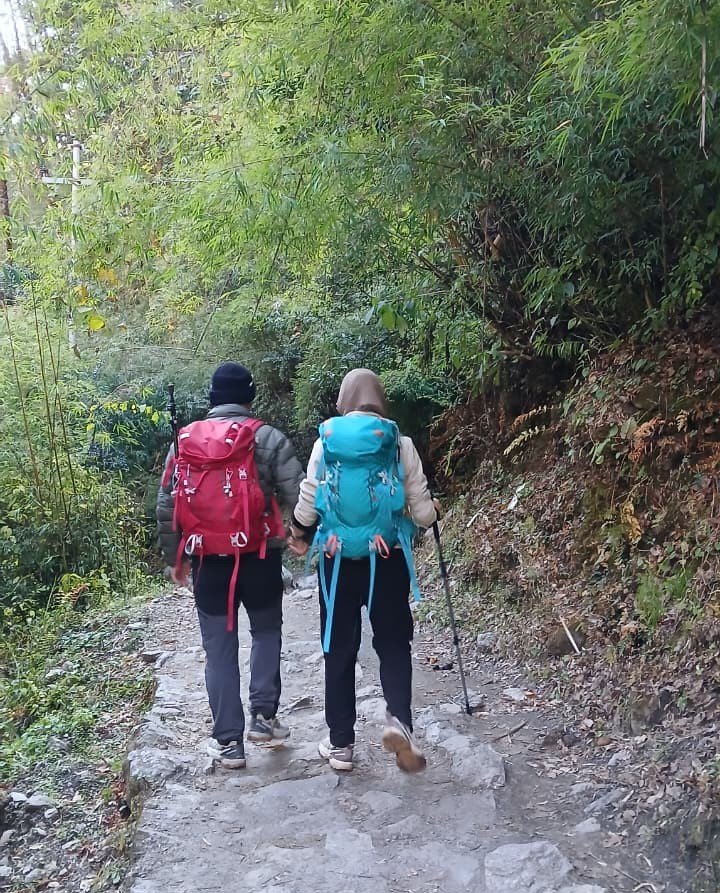
Acclimatization and Altitude on the Langtang Valley Trek
What is the highest point on the Langtang Valley Trek?
The highest point of the Langtang Valley Trek is Kyanjin Ri at 4,773 meters or Tserko Ri at 4984 meters. Both are optional day hikes that offer panoramic views of the Langtang Himal, Ganchenpo, and Langtang Lirung.
While Kyanjin Gompa, located at 3,870 meters, is the highest point where trekkers typically overnight, the optional hikes to Kyanjin Ri or Tserko Ri provide even greater elevation and rewarding mountain vistas.
How do I acclimatize to high altitude on the Langtang Trek?
Acclimatization is critical to safely trekking at high altitudes. The best way to acclimatize is to gradually increase your elevation and allow your body time to adjust. Here's how to acclimatize properly:
- Rest days: Incorporate rest days into your itinerary at higher altitudes, such as staying at Kyanjin Gompa for two nights.
- Hike high, sleep low: After reaching Kyanjin Gompa at 3,870 meters, take a day hike to Kyanjin Ri (4,773 meters) or Tserko Ri (5,033 meters). This approach allows your body to acclimatize while not overexerting yourself by sleeping at a higher elevation immediately.
A slower, well-paced ascent allows your body to adapt to reduced oxygen levels and minimizes the risks of altitude sickness.
How do I prevent altitude sickness on the Langtang Valley Trek?
Preventing altitude sickness is a priority for any trek above 3,000 meters. Follow these tips to minimize the risk:
- Ascend slowly: Don’t rush to higher altitudes. Gradual elevation gain is the key to acclimatization.
- Hydrate well: Drink at least 3 liters of water per day. Staying hydrated helps your body adapt and reduces the risk of headaches and fatigue.
- Eat high-carb foods: Foods rich in carbohydrates, such as rice, pasta, potatoes, and bread, help maintain your energy levels and ease the effects of altitude.
- Avoid alcohol and heavy meals: Alcohol can exacerbate dehydration, and heavy meals can put strain on your digestive system.
- Take rest days: Allow your body time to rest and adjust, especially after reaching higher altitudes like Kyanjin Gompa or Tserko Ri.
- Descend if necessary: If symptoms of altitude sickness persist, such as headaches, nausea, or dizziness, it’s essential to descend immediately to a lower altitude and seek medical attention.
What are the symptoms of altitude sickness on the Langtang Tserko Ri Trek?
Altitude sickness, also known as acute mountain sickness (AMS), can occur above 3,000 meters. Symptoms include:
- Headache
- Nausea and vomiting
- Dizziness
- Loss of appetite
- Fatigue or weakness
- Difficulty sleeping
If you experience these symptoms, it’s important to stop and rest. Descend to a lower altitude (below 3,000 meters) if the symptoms don’t improve or worsen. Kyanjin Gompa and the surrounding areas provide a good option for resting before continuing the trek.
While mild symptoms may improve with rest and hydration, any severe symptoms should be treated as a medical emergency, and immediate evacuation may be necessary.
Can I Trek to Langtang Valley Without Acclimatizing?
No, it is highly advised to acclimatize during the Langtang Valley Trek. Although the trek is considered moderate, the altitude can still pose a risk if you ascend too quickly. Proper acclimatization by taking rest days at strategic points like Kyanjin Gompa and hiking to higher altitudes will help prevent altitude sickness and ensure a safer, more enjoyable experience.
How Does the Altitude Affect My Breathing During the Langtang kyanjin Trek?
At higher altitudes, the oxygen levels decrease, which can make you feel out of breath more easily, even with regular exertion. This is normal and is a result of lower air pressure. As you acclimatize, your body will gradually adjust by increasing the production of red blood cells to carry more oxygen. Taking it slow and allowing your body time to adapt is essential for breathing efficiency at altitude.
What is the Best Way to Avoid Altitude Sickness During the Langtang valley Trek?
The best ways to avoid altitude sickness on the Langtang Valley Trek include:
- Gradual ascent: Don't rush to higher altitudes too quickly. Gradual elevation gain, such as staying a night at Kyanjin Gompa, is key.
- Stay hydrated: Drink at least 3 liters of water per day to keep your body hydrated.
- Eat high-carb foods: Carbohydrates are easy for your body to digest and provide sustained energy.
- Take acclimatization days: Include rest days at higher altitudes, especially at Kyanjin Gompa or Kyanjin Ri.
- Listen to your body: If you feel unwell, don't push yourself. Rest and descend if symptoms worsen.
Is It Safe to Do the Langtang Trek if I Have No Experience at High Altitude?
Yes, the Langtang Valley Trek is a moderate trek and suitable for beginners, provided you are in good physical condition. However, trekking at high altitude can affect everyone differently, so it's essential to follow proper acclimatization practices and be aware of the signs of altitude sickness. If you're a first-time trekker at altitude, consider hiring a licensed guide who can help monitor your health and manage the trek pace.
Can I Do the Langtang Valley Trek in 5 Days?
While it is possible to complete the Langtang Valley Trek in 5 days if you're physically fit, it is not recommended, especially for altitude acclimatization. The trek involves gradual ascents, and rushing the itinerary might increase your risk of altitude sickness. A standard 7–10 day itinerary is ideal to ensure a safer and more enjoyable experience with proper acclimatization and rest days.
How Can I Tell If I'm Getting Altitude Sickness?
Common symptoms of altitude sickness (AMS) include:
- Headaches (a common first sign)
- Nausea or vomiting
- Dizziness or lightheadedness
- Loss of appetite
- Fatigue or weakness
- Difficulty sleeping
If you experience any of these symptoms, it's important to stop ascending and rest. If symptoms don't improve, or if they worsen, descend immediately to a lower altitude (below 3,000 meters) and seek medical assistance.
What Happens if I Don’t Acclimatize Properly?
Failing to acclimatize properly can result in altitude sickness, which, in severe cases, can lead to life-threatening conditions such as High Altitude Pulmonary Edema (HAPE) or High Altitude Cerebral Edema (HACE). These conditions require immediate descent to a lower altitude and emergency medical attention.
To avoid serious complications, it’s essential to follow acclimatization guidelines, ascend slowly, and take rest days at strategic points on the trek. Proper hydration and rest are key.
What Should I Do if I Feel Sick or Have a Headache at Altitude?
If you experience headaches or any signs of altitude sickness, take the following steps:
- Rest and hydrate: Drink water and take a break. Ensure you're drinking enough fluids.
- Avoid ascending further until you feel better. Stay at the current elevation or descend slightly if necessary.
- Take pain relievers: If you have a headache, over-the-counter pain relievers (such as ibuprofen or paracetamol) can help alleviate discomfort.
- Eat high-carb foods: Eating light, easily digestible meals can help provide energy while your body acclimatizes.
If symptoms persist or worsen, descend to a lower elevation immediately and seek medical help.
How Will I Know If I Need to Descend Due to Altitude Sickness?
If you're experiencing symptoms of altitude sickness, descending is the most effective treatment. If you feel unwell, it’s essential to descend to an altitude of around 2,500–3,000 meters or lower to help alleviate symptoms. Kyanjin Gompa and other lower areas along the trail can be good places to rest and recover.
If symptoms don't improve with rest or hydration, descend immediately and consult with your guide or a health professional.
Facilities & Amenities on the Langtang Valley Trek
What Type of Accommodation is Available on the Langtang Valley Trek?
Along the Langtang Valley Trek, accommodation is primarily provided in teahouses (also known as lodges) that offer basic yet comfortable facilities. The rooms are:
- Basic twin-share rooms with wooden beds
- Shared bathrooms with cold water (hot water may be available for an extra fee)
- Blankets for warmth, but it is highly recommended to bring your own sleeping bag for extra comfort and warmth
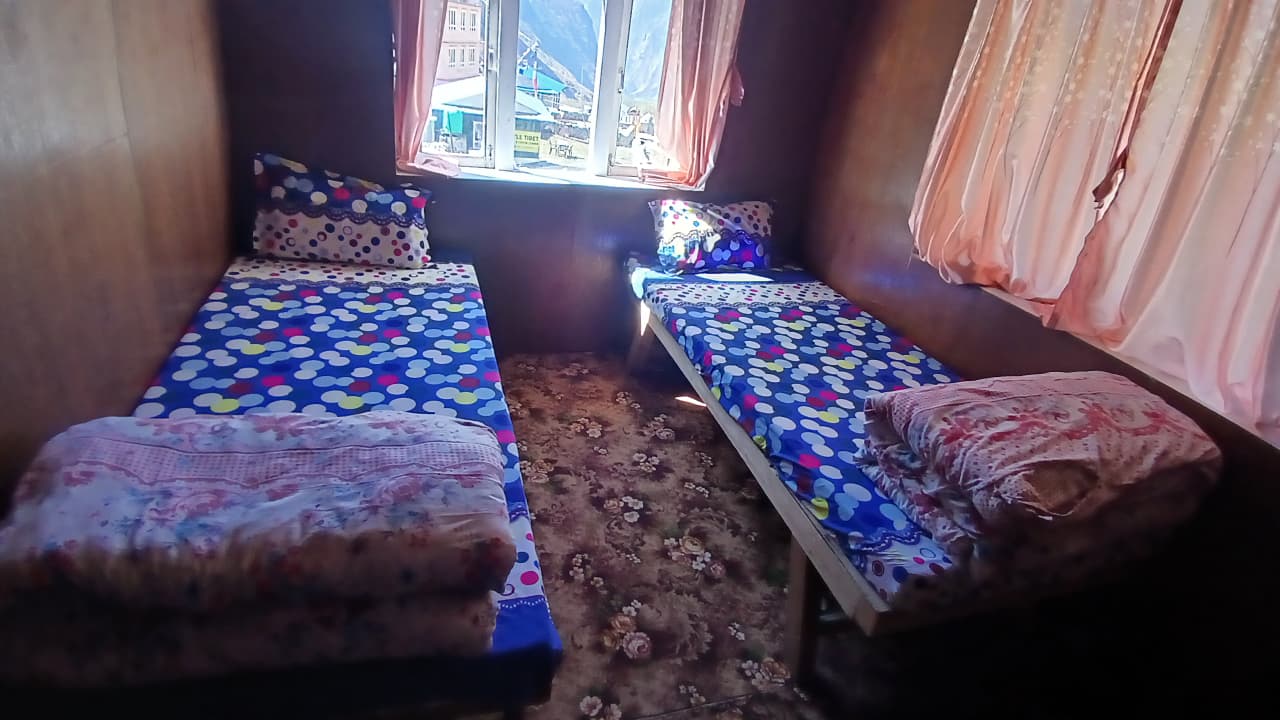
These teahouses are simple, yet cozy, offering a place to rest after a day of trekking. While the accommodations are basic, they provide a welcoming atmosphere and a chance to interact with local Tamang and Tibetan communities.
Can I Charge My Phone or Camera on the Langtang Trek?
Yes, most teahouses along the trek offer electricity or solar power for charging electronic devices such as phones and cameras. However, there is usually a small fee for this service, typically ranging from NPR 100 to 300 per device. Be sure to bring a power bank as a backup, especially for higher altitudes, where power may be less reliable.
Is There Wi-Fi or Mobile Network Coverage on the Langtang Valley Trek?
Wi-Fi is available in some of the larger villages along the Langtang Valley Trek, but the connection can be slow and intermittent, especially as you climb to higher elevations. You may need to pay for Wi-Fi access, with rates typically ranging from NPR 200–500.
For mobile network coverage, both NTC (Nepal Telecom) and Ncell work well in many of the lower-altitude villages, including Syabrubesi and Dhunche. The signal strength remains good up to Kyanjin Gompa, and even at higher elevations like Kyanjin Ri (4,773 m) and Tserko Ri (5,033 m), you can expect reliable mobile coverage in many areas, although it may still vary depending on weather conditions and your specific location.
Despite these generally good connections, it’s still a good idea to inform your family or friends about your trekking itinerary before starting, as mobile service can be spotty in remote spots.
What Food Can I Expect on the Langtang Trek?
The Langtang Valley Trek offers a range of meals catering to both Nepali and Tibetan cuisines. While food options are limited in remote areas, the meals are nutritious and designed to give you the energy you need for trekking. Common dishes include:
- Dal Bhat: A hearty, traditional Nepali dish of lentil soup with rice and vegetables. It’s filling, provides lots of energy, and is often served with unlimited refills.
- Noodles and Momos: A popular Tibetan-inspired dish. Steamed dumplings (momos) are commonly served with noodles, fried rice, and vegetarian or meat fillings.
- Tibetan Bread: A fried bread, served with butter, jam, or honey, often eaten for breakfast or as a snack.
- Omelets and Fried Rice: Popular breakfast and lunch options for energy.
- Yak Cheese and Yogurt: A specialty of the region, especially available at Kyanjin Gompa. The yak cheese is fresh and delicious and offers a great source of protein.
Overall, expect filling meals that provide the necessary sustenance for long days of trekking. Some teahouses may even offer snacks like chocolate bars, granola, or biscuits to keep you energized during the day.
Can I Find Vegetarian or Vegan Options on the Langtang Valley Trek?
Yes, vegetarian and vegan options are widely available at teahouses along the Langtang Valley Trek. Most meals can be customized to accommodate dietary restrictions. The most popular vegetarian dishes include:
- Dal Bhat (lentil soup and rice)
- Vegetable momos (steamed dumplings)
- Vegetable noodles and fried rice
- Tibetan bread with jam or honey
While vegan meals are available, it may be more challenging to avoid dairy in some remote areas. Yak cheese and butter are staples, so you may want to bring your own plant-based alternatives or communicate your dietary needs to your guide beforehand.
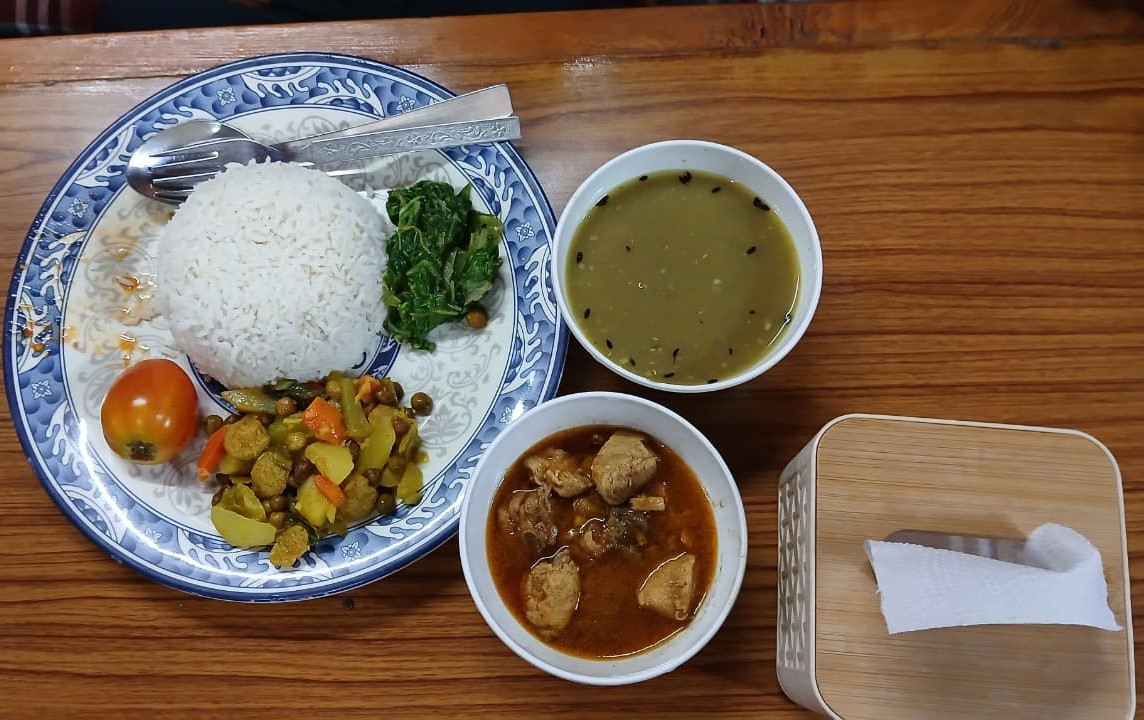
Are There Clean Restrooms and Showers on the Langtang Trek?
Most teahouses along the Langtang Valley Trek have basic restrooms, but the standard of cleanliness can vary. Expect shared outdoor toilets (often squat toilets) in most places. It's advisable to carry toilet paper and wet wipes as these might not always be available.
Showers are available in larger teahouses, but they may cost NPR 200-500 depending on the location. Keep in mind that hot water might not be available in higher altitudes due to the cold temperatures, so be prepared for cold showers in some areas.
Is It Safe to Drink Water on the Langtang Valley Trek?
It’s important to be cautious about drinking water on the Langtang Valley Trek. Tap water or stream water may not be clean or safe to drink without proper treatment. To stay safe:
- Buy bottled water at teahouses along the way. However, keep in mind that plastic waste is an environmental concern, so it’s better to bring a reusable water bottle with a water purification filter or purification tablets.
- SteriPen or Ultraviolet (UV) water sterilizers are also effective methods to purify water while trekking.
- In higher-altitude regions, it’s wise to drink only boiled water or use water purification methods to avoid stomach problems.
Are There Any Shops or Markets Along the Langtang Trek for Supplies?
While there are no large markets along the trek, you can buy essential supplies, snacks, and trekking gear in Syabrubesi and Dhunche, the starting points of the trek. These towns have small shops selling items like:
- Snacks (chocolate bars, nuts, biscuits)
- Trekking gear (such as gloves, jackets, and hats)
- Bottled water and energy drinks
However, prices can be higher due to the remote nature of the region. It’s a good idea to stock up on essentials in Kathmandu before the trek, as these towns might not have a wide variety of trekking supplies.
Are hot showers available during the Langtang Trek?
Yes, hot showers are available at some tea houses along the trek, but they usually come with an extra cost (typically NPR 200–500). However, in more remote areas, hot water may not always be available due to limited resources, so it's a good idea to ask ahead.
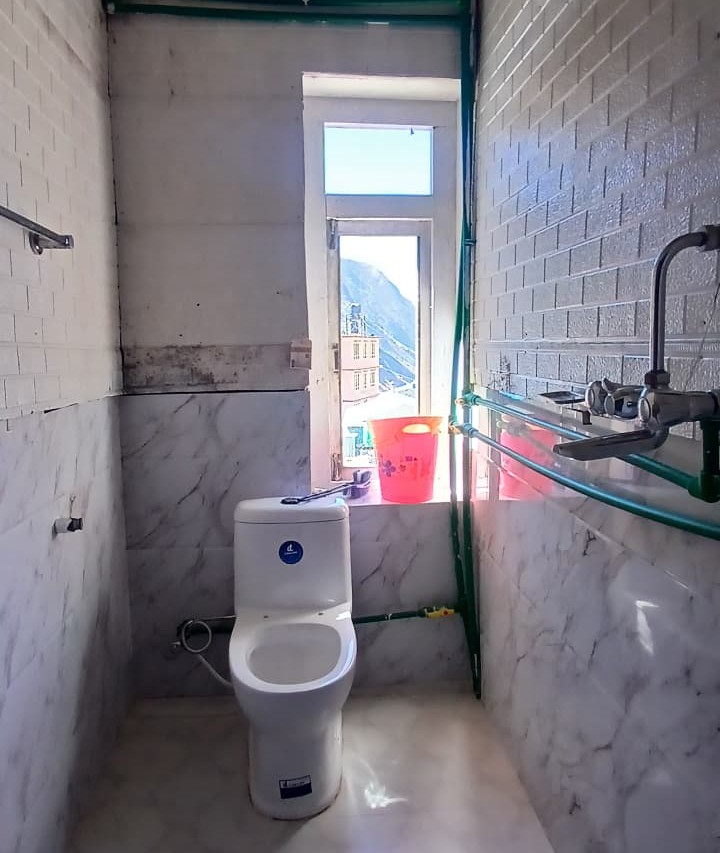
What food can I expect during the Langtang Valley Trek?
The food in the tea houses is typically Nepali-style, with dishes like dal bhat (lentil soup with rice), momos (dumplings), and noodles. You will also find simple rice dishes, Tibetan bread, pancakes, French fries, and eggs. For a quick snack, try the locally made yak cheese or yogurt in Kyanjin Gompa.
Is the food safe to eat during the Langtang Valley Trek?
Yes, the food is generally safe to eat. However, it’s always wise to stick to freshly prepared vegetarian meals to avoid any potential stomach issues. Avoid uncooked or cold food, and drink only boiled water or use water purification tablets to ensure safe hydration. Many trekkers opt for vegetarian meals as they are safer in terms of foodborne illnesses.
Is it possible to find Western food on the Langtang Trek?
Yes, many tea houses along the route offer Western food options such as pancakes, eggs, French fries, and fried rice. While these may not be as common as local Nepali dishes, they are available at most stops, especially in more frequented areas like Kyanjin Gompa.
How much does food cost on the Langtang Valley Trek?
Food prices along the trek vary depending on location and altitude. In lower-altitude areas like Syabrubesi and Dhunche, meals generally cost NPR 500-1000. However, as you climb higher, especially near Kyanjin Gompa, food prices may increase due to the remote location and logistical challenges of bringing supplies.
Can I bring my own snacks for the Langtang Valley Trek?
Yes, it's a good idea to bring some snacks such as energy bars, dried fruit, and nuts to keep your energy levels up during the trek. While there are shops along the route where you can buy snacks like chocolate bars and chips, carrying extra food ensures that you have enough to sustain you between meals.
How do I stay hydrated on the Langtang Valley Trek?
Staying hydrated is crucial, especially in higher altitudes. Bring a water bottle and make sure to carry water purification tablets or a portable filter to treat water from streams or tea houses. Some tea houses also provide boiled water for trekkers, which is another safe option for drinking.
Weather and Best Time to Trek in Langtang Valley
What is the best time to trek in Langtang Valley?
The best times to trek in Langtang Valley are during Autumn (September to November) and Spring (March to May). These seasons offer clear skies, moderate temperatures, and the best mountain views. The weather is generally stable, with sunny days and cool nights, making these the most popular trekking seasons. Autumn is especially favored for festivals and cultural experiences, while Spring is renowned for wildflowers and vibrant landscapes.
What is the weather like in Langtang Valley?
The weather in Langtang Valley can vary significantly depending on altitude:
- Kathmandu and lower altitudes: Warm temperatures range from 15°C to 25°C during the day, perfect for starting your trek.
- Mid-altitudes (Dhunche, Syabrubesi): Temperatures can range between 10°C and 18°C during the day, dropping to below 0°C at night.
- Higher altitudes (Kyanjin Gompa, Kyanjin Ri, Tserko Ri): The temperatures drop further, with cold nights that can reach -5°C to -10°C, especially in the winter months. Daytime temperatures range between -5°C to 10°C, with possible snow at higher altitudes.
Is the trek possible during the Monsoon season?
While it’s possible to trek in Langtang Valley during the Monsoon season (June to August), it is not recommended. Heavy rainfall increases the risk of slippery trails, landslides, and flooding, which can make the trek dangerous. Trails can become muddy, and the dense cloud cover often obstructs views, making it difficult to enjoy the stunning mountain vistas. If you do choose to trek during this season, ensure you have the right rain gear and be prepared for limited visibility.
Can I trek in Langtang Valley during the Winter months?
While it is possible to trek in Langtang Valley during Winter (December to February), be prepared for cold temperatures. Higher altitudes can drop to -10°C at night, and some areas may have snow on the trails. Winter trekking is best suited for those who are well-prepared for cold weather and want to avoid the crowds. The upside is clear skies and less crowded trails, allowing for a peaceful trekking experience.
What should I pack for trekking in Langtang Valley during different seasons?
The packing list for Langtang Valley Trek depends on the season:
- Spring/Autumn: Light to mid-weight clothing, including a rain jacket, layers, and comfortable trekking shoes.
- Winter: Thermal layers, down jackets, warm gloves, and a sleeping bag rated for below-freezing temperatures.
- Monsoon: Waterproof clothing, quick-dry clothing, and waterproof boots to keep dry on muddy, slippery trails.
How does the weather affect the Langtang Valley Trek?
The weather plays a significant role in your trekking experience in Langtang Valley. During Autumn and Spring, the weather is typically stable, which means more enjoyable hiking conditions, clear views, and comfortable temperatures. In contrast, the Monsoon brings challenges such as rain, muddy paths, and the increased possibility of landslides, while Winter introduces the risk of freezing temperatures, snow, and the need for extra gear.
Will I need rain gear on the Langtang Valley Trek?
Yes, you will need rain gear if trekking during the Monsoon season (June to August). A waterproof jacket, poncho, and waterproof pants are essential to keep dry, as heavy rain is common. If trekking outside of the Monsoon season, light rain gear might still be useful for sudden weather changes in the mountains.
Is Langtang Valley Trek Suitable for Solo Travelers?
Yes, the Langtang Valley Trek is an excellent choice for solo travelers. The trail is well-marked, and there are many trekkers along the route, making it relatively safe for individuals traveling alone. You’ll find plenty of tea houses and accommodations along the way, so it’s easy to find a place to stay.
While trekking solo is possible, it’s highly recommended to either hire a guide or join a group trek. A guide not only helps with navigation but also provides valuable insights into the local culture and environment. Plus, trekking with a group enhances safety and provides camaraderie during the journey.
Cost and Budget For Trek to Langtang valley
How much does the Langtang Valley Trek cost?
The cost of the trek typically ranges from $600 to $1,000 USD, depending on the trek duration, services, and group size. This cost generally includes guide and porter fees, meals, and permits.
Are tips expected for guides and porters?
Yes, it is customary to tip your guide and porter. A tip of around 15-20% of the trek cost is recommended, depending on the level of service.
What factors affect the cost of the Langtang Valley Trek?
The cost can vary based on several factors such as:
- Duration of the trek
- Group size (larger groups tend to reduce costs)
- Type of accommodation (basic teahouses vs. higher-end options)
- Additional services like guides, porters, or extra activities
- Season (peak vs off-peak times)
Are there any hidden costs I should be aware of?
Some potential hidden costs could include personal expenses like:
- Snacks and extra drinks
- Optional activities (such as hot showers or charging your electronics)
- Laundry services
- Extra permits for special regions or activities
- Emergency evacuation costs (in case of illness or injury)
What is the cost of accommodation during the trek?
Accommodation in teahouses along the Langtang Trek typically ranges from $5 to $20 per night, depending on the location, altitude, and season. Higher-altitude teahouses may be slightly more expensive due to logistical challenges.

How much should I budget for meals on the trek?
On average, meals in teahouses cost around $5–$10 per meal. Breakfasts are usually cheaper ($4–$7), while dinners may cost between $8–$12, depending on the dish and teahouse.
Are there any additional costs for transportation?
Transportation to the trek's starting point, Syabrubesi, is typically included in trekking packages. If you are traveling independently, bus rides from Kathmandu to Syabrubesi cost around $20–$30 USD. Private transport options are available but come at a higher cost.
What is the best way to handle money on the Langtang Valley Trek?
It's recommended to carry cash in Nepali rupees, as there are limited ATM facilities along the trek. You can withdraw money in Kathmandu before starting the trek. Some teahouses may accept USD or credit cards, but it's safer to have local currency.
Can I use credit or debit cards along the trek?
Credit and debit cards are not widely accepted along the trek. Only in certain towns, such as at higher altitudes, will you find a few places that accept cards. It's better to bring cash.
What is the best season to do the Langtang Valley Trek for the best value for money?
The best seasons for trekking in Langtang are spring (March–May) and autumn (September–November). These seasons provide the best weather conditions, clearer skies, and vibrant landscapes. While prices may be higher during peak seasons, the trekking conditions are optimal.
Are there any discounts or deals available for group bookings?
Yes,All Nepal Hiking offer discounts for larger groups. The cost per person can be reduced when traveling in a group. It’s worth asking trekking agencies about group rates or seasonal promotions.
How can I reduce costs during the Langtang Valley Trek?
To reduce costs, consider trekking independently (without a guide or porter), staying in basic teahouses, and opting for local food. However, this may increase your level of difficulty and require more effort in planning. Hiring a guide and porter can add comfort and safety but may increase the overall cost.
Are there any emergency costs I should consider while trekking?
Emergency costs could include:
- Medical treatment in case of injury or illness
- Emergency evacuation by helicopter (which can cost between $1,000–$3,000 USD, depending on the situation)
- Extra accommodation or transport costs if your trek is delayed or extended due to unforeseen circumstances
- Additional permits or services if you need to change your route or extend your trek for any reason
Gear Preparation & Packing Checklist for the Langtang Trek
What trekking gear do I need for the Langtang Valley Trek?
Essential gear includes:
- Warm jacket – A down or synthetic insulated jacket for the colder evenings and higher altitudes.
- Base layers – Moisture-wicking and warm undergarments.
- Gloves and hat – Essential for cold weather, especially above 3,000 meters.
- Comfortable trekking boots – Make sure they’re broken in before the trek to avoid blisters.
- A 20–30L daypack – For carrying water, snacks, camera, and extra clothing while trekking during the day.
- Sleeping bag – Rated for cold temperatures (-10°C is recommended).
- Trekking poles – These can save your knees during steep descents.
- Water purification system – Water purification tablets or a filter bottle to ensure safe drinking water.
- Sunscreen, sunglasses, lip balm – The sun is intense, especially at higher altitudes.
- Headlamp – For early mornings or evening treks.
- Personal first-aid kit – Basic kit with items like band-aids, pain relievers, and blister care.
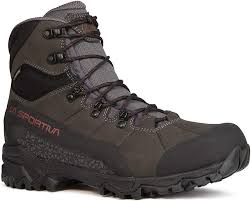
Can I rent trekking gear in Kathmandu?
Yes, there are many gear rental shops in Kathmandu where you can rent items such as sleeping bags, trekking boots, jackets, and other essential trekking gear. Renting gear is a convenient option if you don’t want to carry everything with you.
Do I need trekking poles?
Yes, trekking poles are highly recommended for the Langtang Valley Trek, especially for long descents such as when descending from Kyanjin Ri or Tserko Ri. They help reduce strain on your knees and improve stability on uneven terrain.
Can beginners do the Langtang Trek?
Yes, beginners can comfortably complete the Langtang Valley Trek. While it is a challenging trek due to altitude and the length of the trail, with basic fitness and the support of a guide, most beginners can manage it. A well-paced itinerary, good preparation, and proper gear will make the trek much easier for those new to trekking.
What type of clothing is best for the Langtang Valley Trek?
For the Langtang Valley Trek, it’s best to follow a layering system to manage temperature fluctuations:
- Base layer – Lightweight and moisture-wicking to keep sweat off your skin.
- Mid-layer – Fleece or a light insulated jacket for warmth.
- Outer layer – Waterproof and windproof jacket to protect against rain and cold winds.
- Thermal layers – At higher altitudes, evenings can get cold, so a thermal top and bottom are recommended.
- Hats and gloves – A warm beanie and gloves are essential for the colder sections of the trek. A sun hat or cap is also helpful for sun protection.
What kind of backpack should I bring?
For the trek, you’ll need two bags:
- Daypack (20–30L) – This is for carrying your essentials like water, snacks, camera, and jacket while trekking during the day.
- Main pack (50–60L) – If you're traveling with extra gear (like a sleeping bag or personal items), a larger backpack will be useful, especially if you're using a porter to carry your heavier items and All Nepal Hiking provided 75 little duffel bag
How heavy should my backpack be?
Aim for a weight of about 7–10 kg (15–22 lbs) for your main pack. If you're using a porter, they will carry most of your heavy items. The daypack should only hold your essentials for the day (water, snacks, camera, and extra clothing), so it should weigh around 3–5 kg (6–11 lbs).
Can I rent a sleeping bag and other gear along the trail?
While you can rent basic gear like sleeping bags, jackets, and boots in Kathmandu, renting gear along the trail is not an option. Teahouses typically offer blankets, but they may not be as warm as your own sleeping bag. It’s better to bring your own sleeping bag rated for cold temperatures.
Do I need special gear for crossing rivers or trekking in wet conditions?
Although you don’t typically need gear specifically for river crossings, there are a few items to consider for wet conditions:
- Waterproof footwear – Waterproof boots or gaiters can help keep your feet dry when trekking through muddy or wet trails.
- Dry bags – Use dry bags to protect electronics, clothing, and valuables from getting wet.
- Waterproof jacket – A good waterproof and breathable jacket will keep you dry during rain showers.
Do I need to bring food on the trek, or can I rely on teahouses?
There are teahouses along the Langtang Valley Trek that serve meals, so you don’t need to bring all your food. You can buy food and snacks on the trail. However, bringing a few energy bars, nuts, or trail mix can be helpful for quick energy between meals, especially during longer trekking days.
Should I bring a camera or other electronics?
Yes, you should bring a camera to capture the stunning scenery. Other electronics like a phone or a small tablet for entertainment during rest periods are fine, but keep in mind that charging options can be limited on the trail. Some teahouses may charge a small fee to use their power outlets, and charging may take longer due to limited electricity sources.
Are there any special gear recommendations for winter or off-season treks?
If you're trekking during the winter (December–February) or during the monsoon season (June–August), you’ll need to adjust your gear:
- Winter: Bring extra thermal layers, a warmer sleeping bag, and a windproof jacket. Snow and ice are more likely at higher elevations.
- Monsoon: Pack a lightweight waterproof poncho or rain gear, and ensure your gear is in waterproof bags to keep it dry. The trails can be muddy and slippery, so sturdy boots with good grip are important.
Do I need a power bank for charging electronics?
Yes, it’s a good idea to bring a power bank to charge your electronics, as electricity along the trail may be limited. Some teahouses do offer charging, but it can be slow and costly. A good power bank will help keep your phone or camera charged, especially during the longer trekking days.
Culture & Environment During Langtang Trek
What culture will I experience during the Langtang Valley Trek?
The Langtang region is home to the Tamang and Tibetan communities, where you’ll experience rich cultural heritage. You’ll encounter Buddhist monasteries, chortens, prayer wheels, and the warm hospitality of the local people.
How can I trek responsibly in the Langtang Valley?
Trek responsibly by:
- Carrying your trash and not leaving any waste behind.
- Drinking purified water instead of purchasing plastic bottles to reduce plastic waste.
- Respecting local customs, including traditional dress and religious practices.
- Avoid disturbing wildlife or their natural habitats.
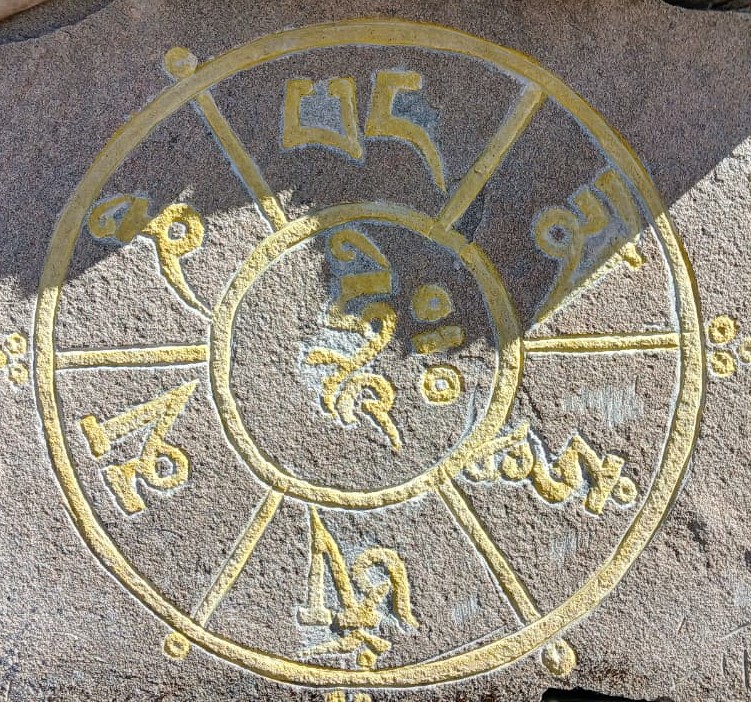
What are some local customs and traditions I should be aware of while trekking in Langtang?
When trekking through the Langtang Valley, it's important to:
- Greet locals with a friendly “Namaste” and show respect for their traditions.
- When visiting monasteries, always walk clockwise around stupas and prayer wheels.
- Respect religious offerings and don’t touch sacred objects unless invited.
Will I see wildlife during the Langtang Trek?
Yes, Langtang Valley is home to diverse wildlife, including the red panda, Himalayan tahr, snow leopards, and various bird species. Be respectful and avoid disturbing animals in their natural environment.
How does the Langtang region contribute to environmental conservation?
The Langtang National Park is committed to conserving the unique biodiversity of the region. Efforts are made to protect wildlife habitats, restore forests, and educate trekkers on minimizing environmental impact.
What is the significance of the religious sites in the Langtang Valley?
The Langtang Valley is home to Buddhist monasteries and stupas, which are central to local spiritual practices. Visiting these sacred sites is an opportunity to learn about the Tibetan Buddhism practiced in the area, as well as the importance of prayer flags, chortens, and ritual offerings.
How can I minimize my environmental footprint while trekking in Langtang?
To minimize your environmental impact:
- Pack out all waste, including organic materials like fruit peels.
- Use biodegradable soaps and avoid washing dishes or clothing in streams.
- Follow the designated trails and respect the natural environment to help preserve it.
Are there any cultural events or festivals in Langtang that trekkers can participate in?
Langtang Valley celebrates several Buddhist festivals, including Lhosar (Tibetan New Year), Tihar, and Sakya Muni Jayanti (Buddha’s birthday). These festivals offer a chance to experience the local culture through traditional dances, rituals, and feasts.
What is the Impact of Climate Change on the Langtang Valley?
Langtang Valley has been significantly affected by climate change, particularly due to glacial retreat and changing weather patterns. Since the 2015 earthquake, the region has seen avalanches and altered glacier dynamics. As glaciers recede, it impacts water sources and ecosystems in the area.
Despite these challenges, the Langtang Valley remains incredibly beautiful and rich in biodiversity, offering trekkers a unique opportunity to witness the effects of climate change firsthand. Efforts are ongoing to raise awareness and protect the region’s environmental sustainability.
Can I Bring My Pet Dog on the Trek?
It’s not recommended to bring a pet dog on the Langtang Valley Trek. The trail is rough, especially at higher altitudes, and conditions may be challenging for animals due to the cold temperatures, high elevations, and steep terrain. Furthermore, the trek can involve long stretches of walking, which might be difficult for your pet.
For the safety and comfort of your dog, it's best to leave them at home or in a trusted pet care facility while you complete your trek. Many trekking routes in Nepal are not pet-friendly, so consider alternative travel options for your pet.
Conclusion: Langtang Valley Trek FAQ
The Langtang Valley Trek offers a unique opportunity to experience the natural beauty of Nepal, rich cultural heritage, and diverse landscapes. Whether you are preparing for the trek in 2026, considering the best time for Langtang Trek, or assessing the Langtang Trek difficulty, it’s essential to be well-prepared. From understanding Langtang trekking permits to knowing the best viewpoints like Kyanjin Gompa trek, the trek offers unforgettable experiences.
For those concerned about Langtang altitude sickness, taking necessary precautions and following Langtang Valley trekking tips can ensure a safe and enjoyable journey. With ample Langtang Valley trek accommodation options along the way, trekkers can comfortably explore the region's breathtaking landscapes, including the scenic Langtang National Park trekking routes.
By following this guide, you’ll be ready to embrace the adventure of a lifetime in the stunning Langtang Valley, one of Nepal’s hidden gems for trekking in Nepal.
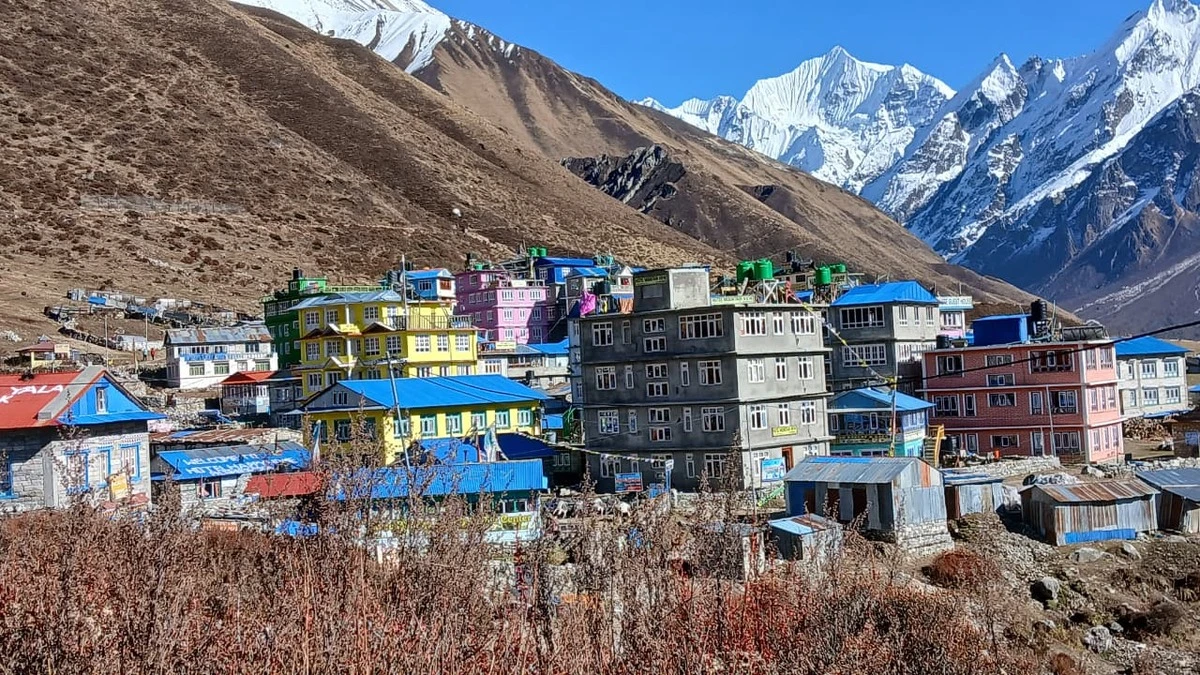














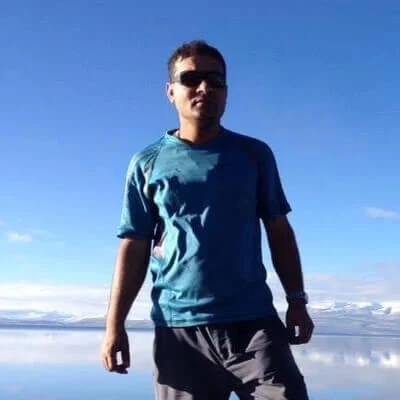

 based on 3 reviews
based on 3 reviews
.webp)

